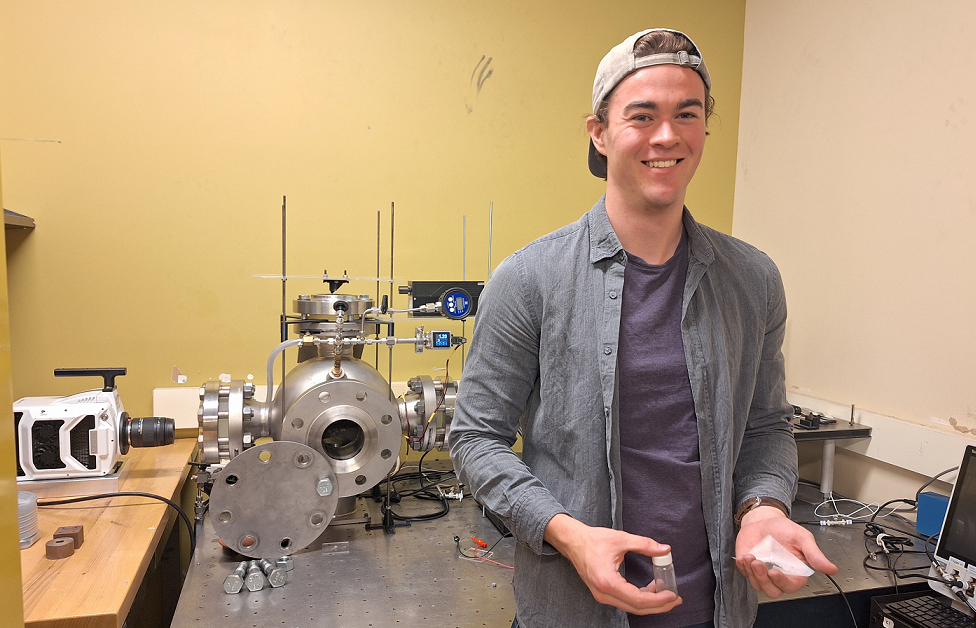For some, living on the moon is an idea that is truly out of this world. But for others, it’s a concept edging closer to reality.
“We are one of the dozens, maybe around the world that actually works out things to turn our space dream into something actually possible,” said Anqi Wang, a post-doctoral fellow with the Emerging Energy Research Laboratory at the University of Waterloo.
A team of researchers from the University of Waterloo, supervised by John Wen, Columbiad Space Research Chair for In-Situ Resource Utilization and Stewardship, and Jean-Pierre Hickey in Waterloo’s Department of Mechanical and Mechatronics Engineering, are on a mission to figure out how they can use the moon’s soil to create energy and help support life on the moon.
“Our goal is to provide the energy that will be required for doing these kind of long term goals for people to actually survive, to work, to live,” Wang explained.
It’s a project that is exciting for all who are involved.
“So I had my PhD in the United States at the University of Missouri and I worked solely on combustion. Nothing related to space. But coming here, I do more than just combustion. It’s turning something from entirely theory to more practical application. And with such a big possibility to be used in such an exciting project,” Wang said.
“Honestly, as a kid, you just think, ‘oh my, look at the moon up there, I wonder what we can do with it’ and then we end up having projects like this,” said co-op student, Jack Ehling.
For PhD candidate, Connor MacRobbie, it’s an opportunity to turn science fiction into reality.
“So the end goal, at least of these projects would be to further our understanding of how to manufacture these materials, to provide sufficient energy or heat for specific use cases,” MacRobbie said.
 Connor MacRobbie holds a sample of synthesized regolith at a University of Waterloo lab on June 12, 2024. (Shelby Knox/CTV News)
Connor MacRobbie holds a sample of synthesized regolith at a University of Waterloo lab on June 12, 2024. (Shelby Knox/CTV News)
Building lunar infrastructure requires substantial materials, but according to MacRobbie, transporting these from earth is costly and impractical. This challenge is driving the team to investigate how lunar regolith, the moon’s top layer of soil and dust, can be used to generate energy.
“So we’re trying to limit the amount of resources taken from the earth to space. One thing that we’re starting to look at is how to use space debris as a fuel source.”
The team conducted experiments using simulant lunar regolith synthesized and supplied by the National Aeronautics and Space Administration agency (NASA).
“So in our case, we’re using lunar regolith, and our lab expertise is in combustion. So we’re focusing on using the lunar regolith as an oxidizer and a metal thermite reaction. So we’re using it to generate heat and energy,” MacRobbie explained.
The approach is also addressing a problem with space debris as the team is working on repurposing this space junk into fuel.
“Looking at making a sustainable infrastructure that allows us to recycle old satellites, refine lunar regolith, pull the materials that we want from that regolith, use it as a building material,” MacRobbie said.
The team said there’s a long journey ahead in creating a self-sufficient lunar environment, but there is hope.
“Is it actually going to amount to anything? At this point I really do think it will. We’re doing a lot of great work and there’s a lot of good prospects for us moving forward,” MacRobbie said.







